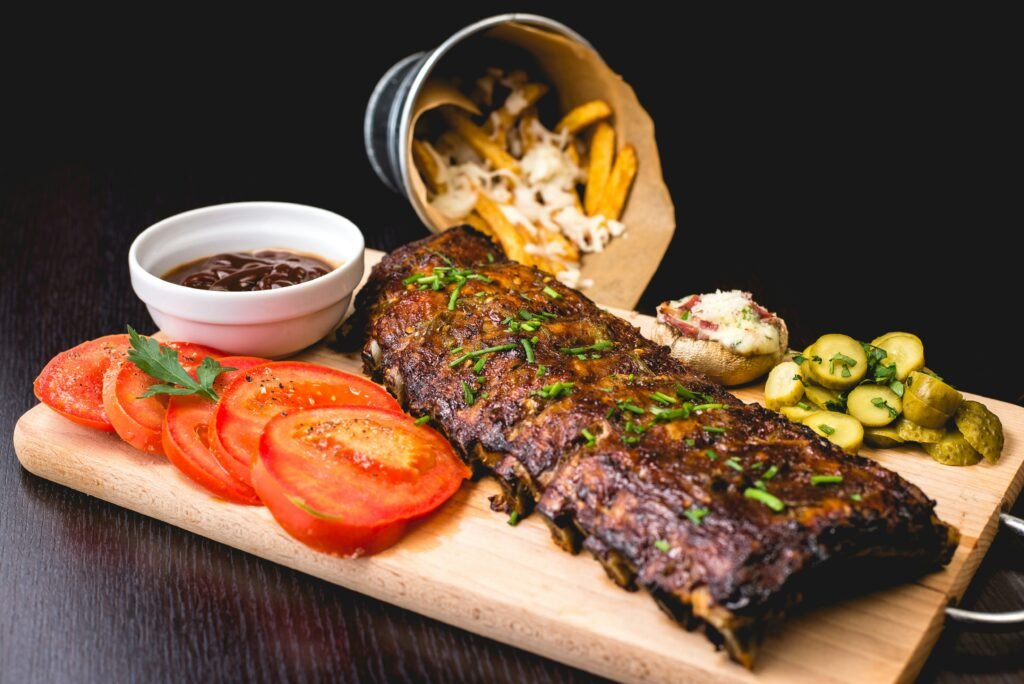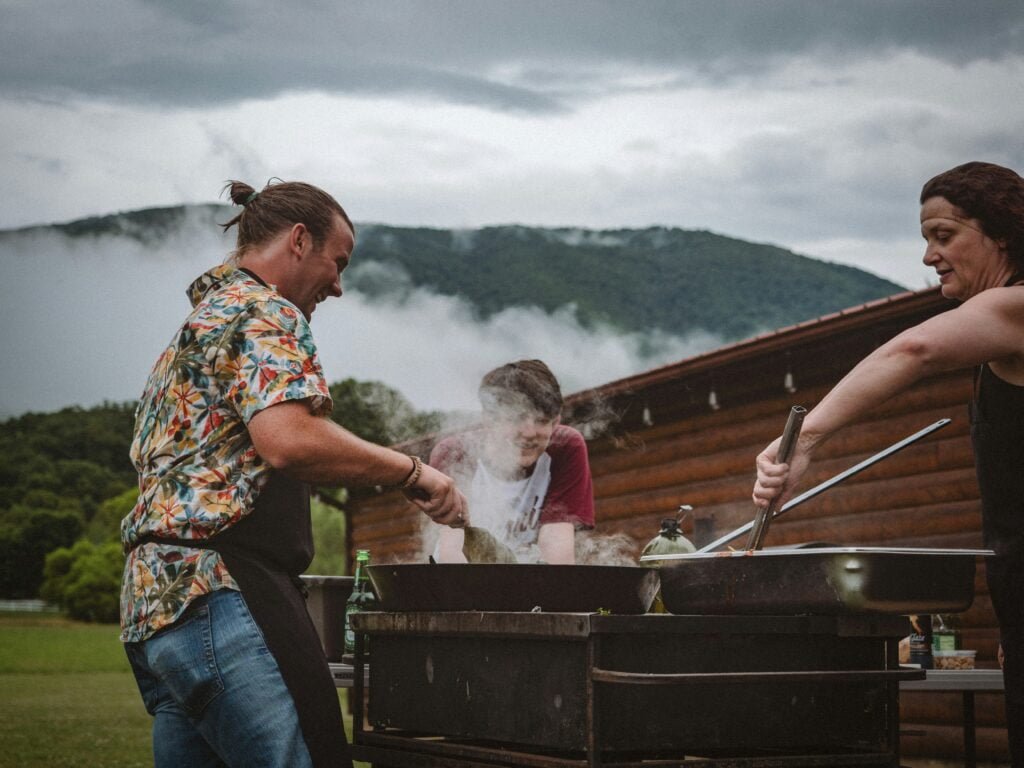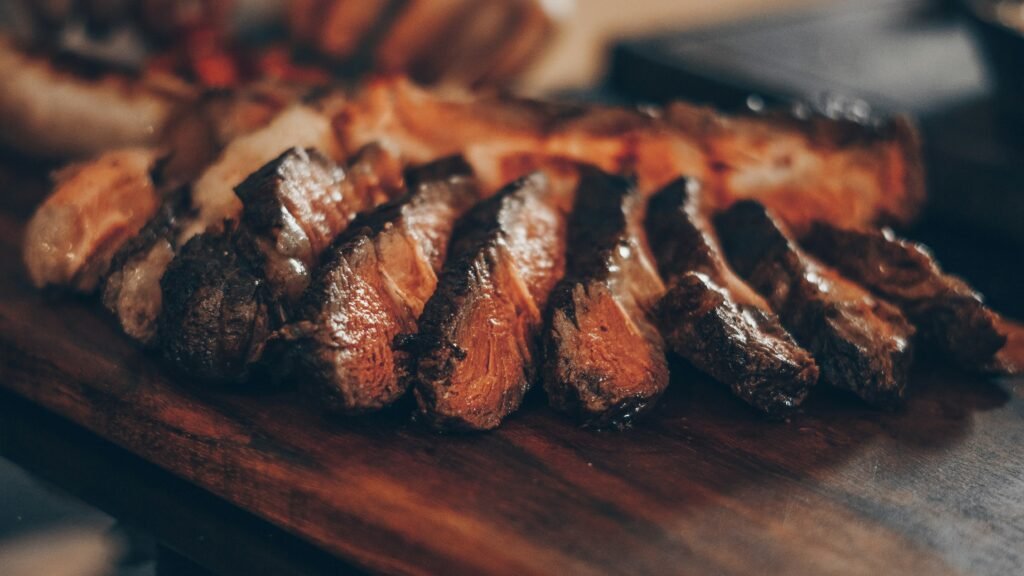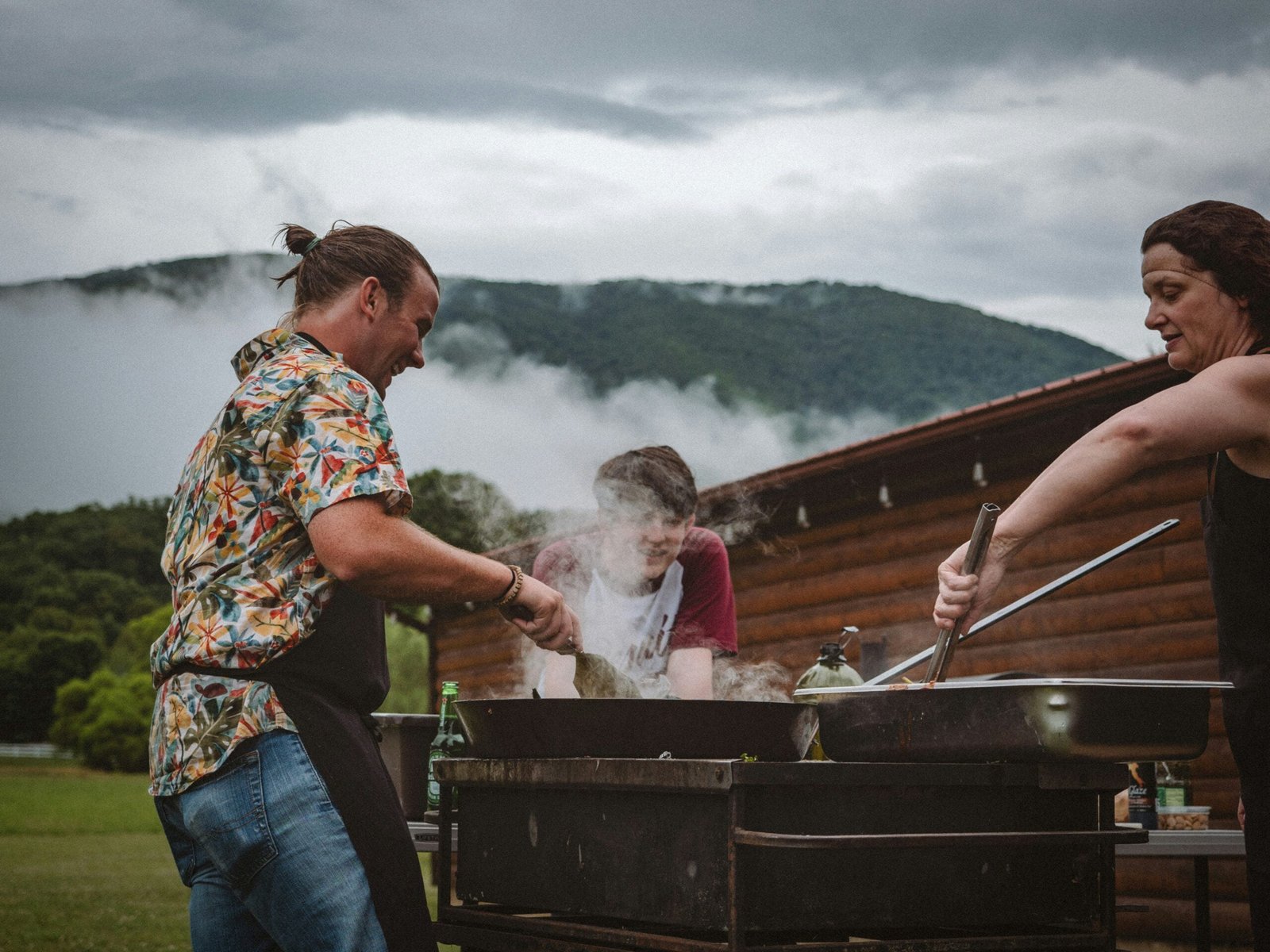If you’ve ever found yourself struggling to master the art of barbequing, you’re not alone. One of the key challenges that grill enthusiasts often face is controlling the temperature on their barbeque grill. Whether you’re a novice or a seasoned griller, achieving the perfect temperature can make or break your culinary masterpiece. So, in this article, we will explore some simple yet effective tips and techniques that will help you become the ultimate grill master and maintain precise control over the temperature on your barbeque grill. Get ready to elevate your grilling game to new heights!

Understanding the Basics of Grill Temperature Control
Grill temperature control is an essential skill for any barbecue enthusiast. Whether you are a novice or an experienced griller, understanding the basics of grill temperature control is crucial to ensure that your food is cooked to perfection every time. In this article, we will explore the various aspects of grill temperature control, including heat zones, direct and indirect heat, open and closed cooking, and much more.
Learning about Heat Zones
One of the fundamental concepts when it comes to grill temperature control is understanding heat zones. Heat zones refer to the different areas of your grill where the temperature varies. By creating different heat zones on your grill, you can have more control over the cooking process and ensure that your food is cooked evenly.
There are typically three heat zones on a grill: hot, medium, and cool. The hot zone is where the flames or heat source directly contact the food, creating a high-intensity heat. The medium zone is slightly cooler and is ideal for searing or cooking food that requires moderate heat. Lastly, the cool zone is the area of the grill where there is no direct heat, making it suitable for slow cooking or keeping food warm.
Understanding Direct and Indirect Heat
Another crucial aspect of grill temperature control is understanding the difference between direct and indirect heat. Direct heat refers to cooking food directly over the heat source, while indirect heat involves cooking food beside the heat source.
Direct heat is ideal for quickly searing meats or cooking smaller, thinner cuts of meat. It provides a higher heat intensity, resulting in a crispy exterior and a juicy interior. On the other hand, indirect heat is perfect for slow cooking larger cuts of meat or delicate foods that require more gentle heat. It allows for even cooking and prevents the food from getting burnt.
To utilize direct and indirect heat effectively, you can simply move the food to different heat zones on your grill. By positioning the food directly over the flames or beside them, you can control the level of heat and achieve the desired cooking results.
Familiarizing with Open and Closed Cooking
Open and closed cooking methods are often used in conjunction with direct and indirect heat to control grill temperature successfully. Open cooking refers to grilling your food with the grill lid open, allowing the flames to directly heat the food. This method is commonly used for searing or when a higher heat intensity is required.
On the other hand, closed cooking involves grilling your food with the grill lid closed, creating an oven-like environment. This method is ideal for cooking foods that require longer cooking times or for smoking foods. By trapping the heat inside the grill, you can achieve more even cooking and impart a smoky flavor to your food.
Understanding the difference between open and closed cooking methods is essential as it can greatly affect the overall cooking process and the flavors of your food.
Types of Barbeque Grills and Their Temperature Control Methods
Not all barbeque grills are created equal, and each type comes with its own temperature control methods. Let’s take a closer look at the most common types of barbeque grills and how they allow you to control the grill temperature.
Charcoal Grills
Charcoal grills are a popular choice among grill enthusiasts due to the smoky flavor they impart to the food. Controlling the temperature on a charcoal grill can be achieved by adjusting the amount of charcoal used and the placement of the charcoal within the grill.
To increase the temperature, simply add more charcoal to the grill. For indirect cooking or lower temperatures, create a two-zone fire by positioning the charcoal on one side of the grill only. This allows for both direct and indirect heat zones, providing more control over the temperature.
Gas Grills
Gas grills are known for their convenience and ease of use. Temperature control on a gas grill is typically done through the burner knobs. Most gas grills have multiple burners, allowing you to create different heat zones by adjusting the individual burner settings.
To increase the temperature, turn up the burner knobs to increase the flame intensity. For lower temperatures or indirect cooking, simply lower the burner settings or turn off one or more burners to create a cooler zone.
Wood Pellet Grills
Wood pellet grills have gained popularity in recent years due to their ability to provide both the convenience of gas grills and the smoky flavor of charcoal grills. These grills use wood pellets as the fuel source, which are automatically fed into a combustion chamber.
Temperature control on a wood pellet grill is achieved through a digital controller. Simply set the desired temperature on the controller, and the grill will automatically adjust the fuel and airflow to maintain the temperature. This allows for precise temperature control and eliminates the need for constant monitoring and adjustment.
Components of Your Grill Relevant to Temperature Control
To master grill temperature control, it is essential to understand the various components of your grill that play a role in maintaining the desired temperature. Let’s explore three crucial components: the grill lid, air vents and dampers, and the grill grate.
The Role of the Grill Lid
The grill lid plays a significant role in temperature control by trapping the heat inside the grill. By keeping the lid closed, you create an oven-like environment, ensuring even heat distribution and preventing temperature fluctuations.
It is essential to keep the grill lid closed as much as possible during the cooking process. Removing the lid frequently can cause heat loss, resulting in longer cooking times and inconsistent temperatures. However, there are instances when it is necessary to open the lid, such as when adding or flipping food. In such cases, it is advisable to work quickly to minimize heat loss.
Understanding Air Vents and Dampers
Air vents and dampers are located on the bottom and top of your grill and are responsible for controlling the airflow. These components play a crucial role in regulating the temperature and preventing flare-ups.
To increase the temperature, open the vents and dampers to allow more oxygen into the grill, feeding the fire and increasing the heat intensity. To lower the temperature, close the vents and dampers to restrict the airflow and reduce the oxygen supply to the fire.
It is important to note that different grills may have varying vent and damper designs, so it is advisable to consult your grill’s manual for specific instructions on how to adjust these components.
The Importance of Grill Grate
The grill grate is the surface on which the food is cooked. It not only provides those iconic grill marks but also plays a role in temperature control. The position of the grill grate in relation to the heat source can affect the cooking temperature.
For direct heat cooking, place the grill grate directly over the flames to achieve high-intensity heat. For indirect heat cooking, position the grill grate away from the heat source, allowing for more gentle heat and a slower cooking process.
Additionally, maintaining a clean grill grate is crucial for temperature control. A dirty or clogged grill grate can inhibit heat transfer, resulting in uneven cooking. Regularly clean your grill grate to ensure optimal temperature control and prevent any unwanted flavors from previous cookouts.
Maintaining Consistent Grill Temperature Control
Consistency is key when it comes to grill temperature control. To ensure that your food is cooked evenly and to the desired level of doneness, here are some essential tips:
Creating Heat Zones
As mentioned earlier, creating heat zones on your grill allows for more control over the cooking process. By having different heat areas, you can move the food around as needed, ensuring that each piece cooks evenly.
To create heat zones on a charcoal or gas grill, simply push the charcoal or turn on the burners on one side only, leaving the other side cooler. This way, you can sear your meat over direct heat and then move it to the cooler side for indirect cooking.
Preheating the Grill
Preheating the grill is a crucial step in temperature control. It allows the grill to reach your desired cooking temperature, reducing the chances of undercooking or overcooking your food.
To preheat your grill, simply turn on the heat source and close the lid. Allow the grill to heat up for around 10-15 minutes, or until it reaches the desired temperature. This ensures that the grill grates are hot enough to sear the food properly and provides a consistent cooking environment.
Monitoring the Grill Temperature
To maintain consistent grill temperature, it is important to monitor the temperature throughout the cooking process. Many grills come with built-in thermometers, but it is advisable to use additional grill thermometers for more accurate readings.
Place the grill thermometer on the cooking grates, away from direct heat sources, to get an idea of the overall temperature inside the grill. Monitoring the temperature allows you to make any necessary adjustments to maintain the desired heat level.
Adjusting The Grill Heat
Sometimes, despite your best efforts, you may need to make adjustments to the grill heat during the cooking process. If the temperature is too low, open the vents and dampers to increase the airflow and fuel the fire. If the temperature is too high, close the vents and dampers to restrict the airflow and reduce the heat intensity.
It is important to make small, gradual adjustments rather than drastic ones to avoid sudden temperature fluctuations. Making small tweaks allows the grill to respond gradually and helps maintain a more consistent temperature.

Using Tools and Accessories to Control Temperature
In addition to the basic components of your grill, there are various tools and accessories available that can aid in temperature control. Let’s explore two essential ones: grill thermometers and heat deflectors.
Using Grill Thermometers
Grill thermometers are invaluable tools for monitoring the internal temperature of your food. They come in various types, such as probe thermometers or instant-read thermometers, and provide accurate readings to ensure that your food is cooked to the desired level of doneness.
Probe thermometers are inserted into the thickest part of the food, while instant-read thermometers provide a quick reading when inserted into the food. Both types are useful for monitoring the temperature and avoiding undercooked or overcooked food.
Digital Vs Analog Thermometers
When it comes to choosing a grill thermometer, you have the option of digital or analog thermometers. Digital thermometers provide a more precise reading and often come with additional features such as alarm settings or wireless monitoring capabilities. Analog thermometers, on the other hand, rely on a dial and are simpler in design.
Both types of thermometers can be effective in monitoring grill temperature, so choose the one that suits your preferences and budget. Just make sure to select a reliable and accurate thermometer to ensure precise temperature control.
Using Heat Deflectors
Heat deflectors are accessories that help regulate and distribute heat more evenly across the grill. They are typically made of metal or ceramic and are placed between the heat source and the food.
Heat deflectors are especially useful for indirect cooking methods or when grilling larger cuts of meat. They help shield the food from direct heat, preventing it from getting overly charred or burnt. By distributing the heat more evenly, heat deflectors promote consistent cooking and prevent hot spots on the grill.
Investing in Grill Gloves for Heat Management
When it comes to handling the grill, heat management is essential not only for controlling the temperature but also for ensuring your safety. Grill gloves are specially designed to provide protection and allow you to handle hot grill grates, pans, or other accessories with ease.
Grill gloves are typically made from heat-resistant materials such as silicone or Kevlar, which can withstand high temperatures. They provide a secure grip, allowing you to handle hot objects confidently without the risk of burns or accidents. Using grill gloves not only protects your hands but also enables you to have better control over the cooking process.
Understanding Flare-Ups and How to Prevent Them
Flare-ups can be a common occurrence when grilling and can jeopardize your temperature control efforts. Understanding what causes flare-ups and how to prevent them is crucial for maintaining a safe and controlled grilling environment.
What Are Flare-Ups?
Flare-ups are sudden, intense bursts of flames that occur when grease or fat from the food drips onto the heat source, causing it to ignite. They can quickly engulf the food and result in uneven cooking or even charred food.
Flare-ups are not only undesirable for temperature control but also pose a safety risk. They can cause burns, flare-up accidents, or damage to your grill. Preventing flare-ups is key to maintaining a controlled grilling experience.
Causes of Flare-Ups
Several factors can contribute to the occurrence of flare-ups. Excessive fat or grease on the food, particularly marbled meats or fatty cuts, can drip onto the heat source and ignite. Additionally, marinades or sauces that contain sugar or oil can also contribute to flare-ups.
An overloaded grill or a lack of proper cleaning can also lead to flare-ups. Leftover food residue or grease buildup can become fuel for the flames, increasing the chances of flare-ups.
How to Prevent and Handle Flare-Ups
Preventing flare-ups requires diligence and proper grill maintenance. Here are some tips to prevent and handle flare-ups effectively:
- Trim excess fat from meats before grilling to minimize dripping.
- Avoid marinating with sugary or oily sauces that can increase the chances of flare-ups.
- Clean your grill thoroughly before each use to remove any residual grease or food particles.
- Keep a spray bottle filled with water nearby to quickly extinguish any flare-ups that may occur.
- If a flare-up does occur, quickly move the food to a cooler zone or temporarily remove it from the grill until the flames subside.
- Never use water to extinguish a grease fire, as it can cause the flames to spread. Use a fire extinguisher or a designated grill fire suppressant instead.
By following these preventative measures and being prepared to handle flare-ups, you can minimize the risk of flare-ups and maintain better control over the temperature and cooking process.

Tips for Controlling Temperature in Different Weather Conditions
Grilling is not limited to ideal weather conditions, and understanding how to control temperature in various weather conditions is essential. Whether you are grilling in windy, cold, or hot weather, here are some tips to help you maintain temperature control.
Grilling in Windy Conditions
Grilling in windy conditions can be challenging as it can cause temperature fluctuations and increase the chances of flare-ups. To combat these challenges, try the following tips:
- Position your grill in a sheltered area to minimize the impact of wind on the grill temperature.
- Create wind barriers using grill screens or makeshift barriers to block the wind and maintain a more consistent temperature.
- Adjust the air vents and dampers to compensate for the increased airflow caused by the wind. Close them slightly to reduce the oxygen supply and prevent the fire from getting too intense.
Grilling in windy conditions may require more attention and adjustments to maintain temperature control. By taking these precautions, you can minimize the effects of the wind and achieve consistent cooking results.
Grilling in Cold Weather
Grilling in cold weather can pose its own set of challenges, such as longer preheating times and difficulty maintaining heat. Here are some tips to help you control the temperature when grilling in cold weather:
- Allow for extra preheating time to ensure that your grill reaches the desired temperature before placing the food.
- Use more fuel, such as charcoal or pellets, to compensate for the heat loss caused by the cold weather.
- Consider using thermal blankets or insulating covers specifically designed for grills to help retain heat and maintain more consistent temperatures.
By adjusting your grilling techniques and taking precautions to combat the effects of cold weather, you can still enjoy perfectly grilled food even in chilly conditions.
Grilling in Hot Weather
Grilling in hot weather may present its own challenges, such as maintaining lower temperatures for slow cooking or avoiding excessive heat buildup. Here are some tips to control the temperature when grilling in hot weather:
- Position your grill in a shaded area to minimize the direct exposure to the sun and reduce the risk of overheating.
- Adjust the vents and dampers accordingly to allow for better airflow and prevent the grill from becoming too hot.
- Use indirect heat cooking methods more often to avoid excessive charring or burning of the food.
By implementing these strategies, you can better manage the heat when grilling in hot weather and achieve the desired cooking results.
Common Mistakes to Avoid While Controlling Grill Temperature
Even with a good understanding of grill temperature control, it’s essential to be aware of common mistakes that can compromise your efforts. By avoiding these mistakes, you can ensure that your food is cooked to perfection.
Overloading the Grill
One common mistake is overloading the grill with too much food. Adding too much food to the grill overcrowds it, which can result in uneven cooking and temperature fluctuations. To maintain better temperature control, cook in smaller batches or use a larger grill if needed.
Not Cleaning the Grill Regularly
Neglecting to clean your grill regularly can have a significant impact on temperature control. Grease buildup or leftover food particles can hinder heat transfer and cause flare-ups. Make it a habit to clean your grill thoroughly before and after each use to prevent any temperature inconsistencies and maintain optimal performance.
Not Preheating the Grill
Preheating the grill is an essential step in temperature control, yet it is often overlooked. Failing to preheat the grill adequately can result in longer cooking times and inconsistent heat distribution. Always allow your grill to preheat before cooking to ensure that it reaches the desired temperature and provides a consistent cooking environment.
Ignoring The Lid
Another mistake to avoid is ignoring the grill lid. Keeping the lid open for extended periods can lead to heat loss and temperature fluctuations. Remember to close the lid as much as possible during the cooking process, only opening it when necessary to flip or add food.
By being mindful of these common mistakes, you can maintain better control over the temperature and achieve more consistent cooking results.
How to Handle Undercooked or Overcooked Barbeque
Even with the best temperature control efforts, undercooked or overcooked barbeque can still happen. Here is how to identify and correct these common cooking issues.
Identifying Undercooked Barbeque
Undercooked barbeque can be identified by its raw or chewy texture and lack of flavor. Factors such as insufficient cooking time, low grill temperature, or improper placement on the grill can contribute to undercooking.
Correcting Undercooked Barbeque
If you find that your barbeque is undercooked, there are a few steps you can take to correct it. Firstly, move the undercooked food to a cooler zone on the grill and continue cooking it with indirect heat. Alternatively, you can finish the cooking process in an oven at a higher temperature until the desired doneness is reached.
Identifying Overcooked Barbeque
Overcooked barbeque is characterized by a dry, tough texture and a burnt or overly charred exterior. Overcooking can occur due to excessive cooking time, high grill temperature, or improper heat management.
Correcting Overcooked Barbeque
If you have overcooked your barbeque, there are still ways to salvage it. For meats that have become dry, consider marinating or basting them with a sauce or broth to add moisture. For overly charred exteriors, you can trim off the burnt portions or scrape them lightly to remove the charred bits.
By knowing how to identify and correct undercooked or overcooked barbeque, you can salvage your dish and still enjoy a delicious meal.
Advanced Temperature Control Techniques
For those looking to take their grill temperature control to the next level, here are a few advanced techniques worth exploring.
The Offset Smoking Method
The offset smoking method involves using a grill that has a separate firebox attached to the side. The firebox serves as the heat source, while the main cooking chamber remains at a lower temperature, allowing for slow cooking and smoking.
By using the offset smoking method, you can create a more controlled environment for slow-cooked meats, achieving tender, smoky results. This technique requires precise temperature monitoring and adjustments to ensure optimal results.
The Two-Zone Fire Method
The two-zone fire method is a versatile technique that allows you to create both direct and indirect heat zones on a grill without the need for a separate firebox. By positioning the charcoal or burners on one side of the grill, you can create a hot zone and a cooler zone.
This method is particularly useful for grilling foods that require both searing and gentle cooking, such as thick steaks or delicate fish. Start by searing the food over direct heat in the hot zone and then move it to the cooler zone for indirect cooking until it reaches the desired doneness.
The Ring of Fire Method
The ring of fire method is commonly used when grilling large cuts of meat, such as whole birds or roasts. This technique involves creating a ring of charcoal or burners around the perimeter of the grill, leaving the center empty.
By placing the food in the center of the grill, you are essentially creating an indirect cooking environment. The heat from the outer ring of charcoal or burners radiates around the food, providing a slow and gentle cooking process.
These advanced temperature control techniques may require some practice and experimentation to master. However, they open up new possibilities for achieving more precise cooking results and exploring different flavors and cooking styles.
In conclusion, mastering grill temperature control is a skill that every grill enthusiast should strive for. By understanding the basics of heat zones, direct and indirect heat, and open and closed cooking methods, you can take control of your grill and achieve consistently delicious results. Additionally, familiarizing yourself with the temperature control methods of various grill types, such as charcoal, gas, and wood pellet grills, allows you to choose the right grill for your cooking preferences. Understanding the components relevant to temperature control, such as the grill lid, air vents and dampers, and the grill grate, is crucial for maintaining a consistent cooking environment. Utilizing tools and accessories like grill thermometers, heat deflectors, and grill gloves further enhance your temperature control capabilities. Furthermore, being aware of potential flare-ups, knowing how to prevent and handle them, and avoiding common mistakes contribute to a safer and more successful grilling experience. Finally, by understanding how to handle undercooked or overcooked barbeque, including identifying and correcting these issues, you can salvage your dishes and still enjoy a delicious meal. For those seeking an advanced level of temperature control, exploring techniques like the offset smoking method, the two-zone fire method, and the ring of fire method can elevate your grilling skills to new heights. So, fire up your grill, put your newfound knowledge into practice, and get ready to impress your friends and family with perfectly cooked barbeque every time.

